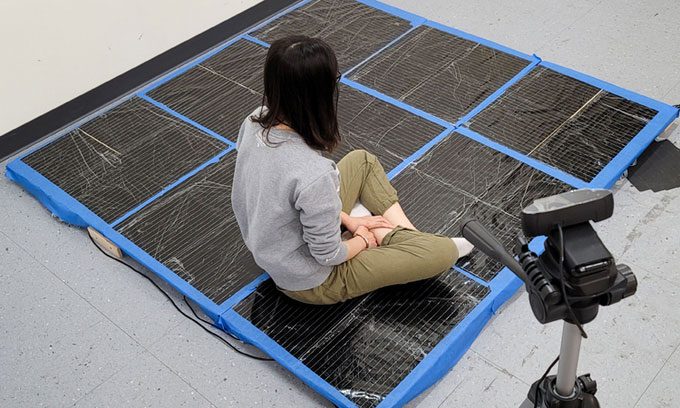The intelligent mat developed by the Massachusetts Institute of Technology (MIT) can accurately predict the actions or postures of users through pressure points.
Engineers at the Computer Science and Artificial Intelligence Laboratory (CSAIL) at MIT have developed an intelligent mat that can accurately identify a person’s body movements or postures without the need for a camera, according to a report by New Atlas on June 27.

The intelligent mat predicts the user’s posture without the need for a camera. (Photo: MIT).
The experimental prototype measures 3.3 m2 and contains over 9,000 sensors made from pressure-sensitive film and conductive fibers. Essentially, when a heavy object is placed on multiple points of the mat, different electrical signals are transmitted based on the pressure levels, pressure points, and the relative positions of these points.
Initially, the team of experts “trained” the intelligent mat by applying pressure on it and providing corresponding videos of various human actions such as walking, sitting up, doing push-ups, practicing yoga, sitting down, lying down, rolling, and standing on tiptoes.
Subsequently, the pressure maps of these actions were linked to a virtual model, enabling the system to determine a person’s posture based solely on pressure data. The system can even accurately infer upper body movements—for example, determining whether a person is leaning left or right based on the weighted foot.
The intelligent mat identifies specific actions with an accuracy of 97% and can predict a person’s posture within a deviation of 10 cm. “Imagine using the mat for workout purposes. Based only on pressure data, it can recognize activities, count repetitions, and calculate calories burned,” said Yunzhu Li, a co-author of the study.
Other applications of the intelligent mat include monitoring the elderly to detect falls, assisting injured individuals in rehabilitation, tracking movements of users in virtual reality technology, or playing video games. It may be less cumbersome than wearable devices, easier to install than infrared sensors, and more privacy-conscious than cameras.
The research team noted that the intelligent mat can be easily scaled up, and the production costs are relatively low. They created the prototype for under $100. In the future, they plan to gather more information from the signals, such as the user’s height or weight, and adjust it to allow multiple users to utilize the mat simultaneously.



















































